SPOILERS AHEAD for Stranger Things season three.
Since its debut in 2016, Stranger Things has been somewhat of a large collective scrapbook for its Netflix audience. A leather jacketed strong man reminiscent of The Terminator, the heart melting smile of Sean Astin, Corey Hart’s “Never Surrender” playing through a small radio – the hodgepodge of ’80s imagery, culture, and references experienced throughout its three seasons so far makes it hard not to feel nostalgic for its throwback setting even for those born years later.
As its ensemble of small town heroes face off against the, well, strange things that go bump in the night, we can’t help but look back to earlier times, and the same is true for its protagonists. Stranger Things is a show often about reminiscing about the past; in its premier season, a mother looked back on memories experienced with her missing son for clues to his whereabouts, and in season two many of its characters grappled with the traumatic experience of coming into contact with a mysterious dimension and its terrifying creatures one year prior.
Monsters and memories are still an important aspect of Stranger Things, and its most recent outing finds most of its heroes trying to move on from the past while others desperately cling on to it.
“I’m not trying to be a jerk. Okay? But we’re not kids anymore,” Mike says to a hurt Will during an early episode in season three. “I mean, what did you think, really? That we were never gonna get girlfriends? We were just gonna sit in my basement all day and play games for the rest of our lives.” Moments such as this drive home the fact that the show’s young cast of characters, in particular, are getting older. They’re no longer the prepubescent youngsters from the first season and have now traded out sessions of D&D for trips to the new Starcourt mall and secret kissing sessions.
The literal growth of some of these protagonists makes for a season that feels different than the previous two, but that isn’t the only aspect that contributes to this feeling. A change in season setting-wise from the fall to the summer helps make for a Stranger Things that’s not only brighter than it’s ever been before – complete with colorful pool outfits – but also fun and funny. A big location towards the back half of the season is an Independence Day Fun Fair – a place with so many American flag sightings you’re surprised not to see a corn dog come out of the fryer looking like one. In comparing the Stranger Things seasons to rides, you’d find at a fair like this that the first two feel like creeping through a haunted house while the third feels like strapping into a wooden roller coaster. One and two feature many slow experiences of terror while three is a fast-paced thrill ride filled with hair-raising highs and scary lows.
Even with slight tonal shifts such as those mentioned above, Stranger Things season three still keeps the core aspects you know and love about the series. Back is the multi-tiered style of storytelling with the kids, teens, and adults separately working together before joining forces in a final showdown. Here, all attempt to take down Russian invaders in Hawkins tampering with The Upside Down, as well as The Mind Flayer, who attempts to stop Eleven once and for all.
This momentum-filled plot does an excellent job weaving together storylines that allow for colorful character interaction. One can’t help but smile watching as Eleven (Millie Bobby Brown) and Max (Sadie Sink) have a girls’ day at the mall after the former has an argument with Mike. Brown and Sink have a delightful chemistry as the teens roam Starcourt in a montage set to Madonna’s “Material Girl”; Brown, as always, proves to be exceptional at non-verbal acting as shown in one moment when her character looks at a piece of clothing with a smile and wide-eyed wonder – the fashion choice represents a claim of individuality that she was robbed of as a girl.
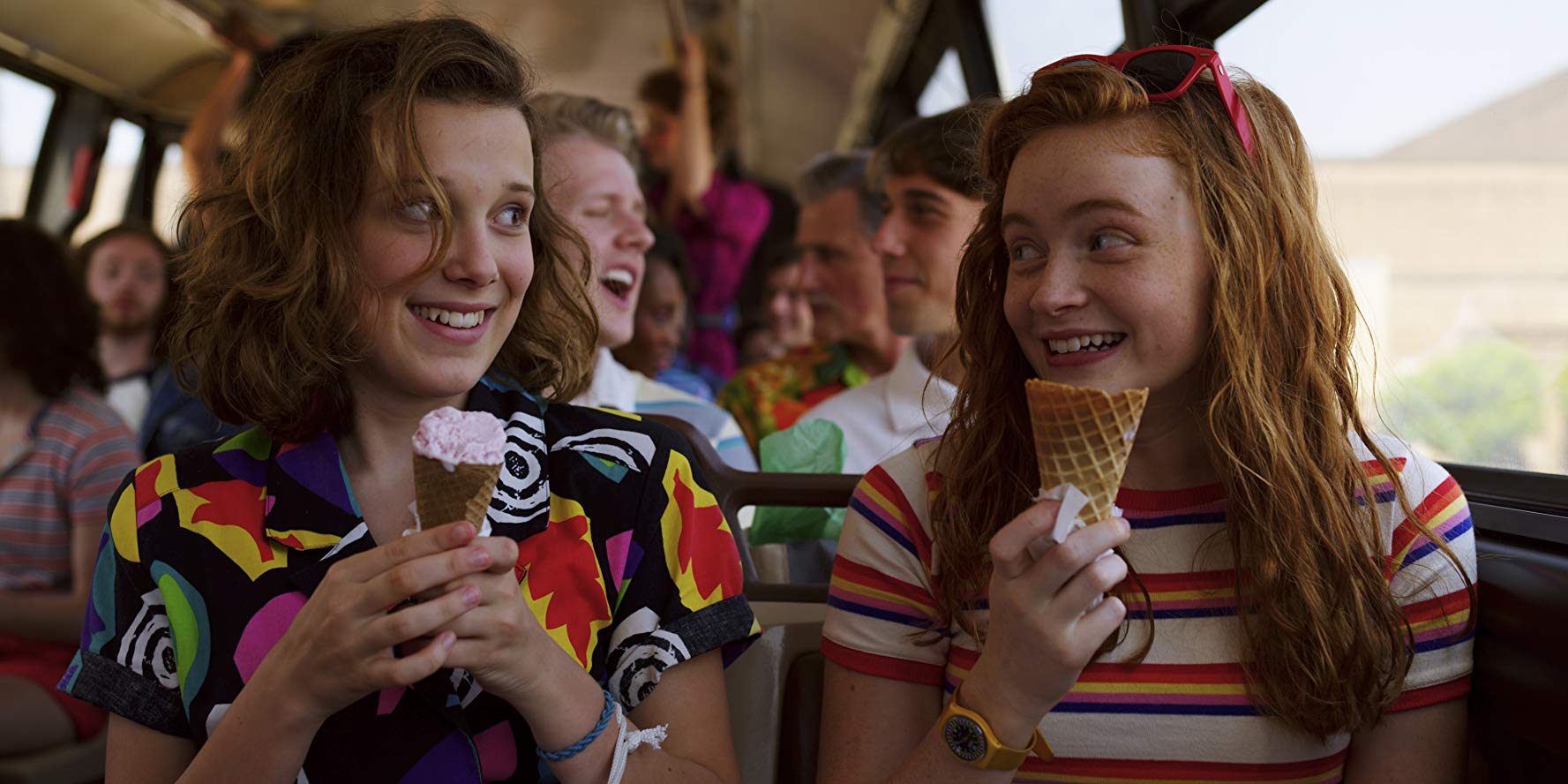
Meanwhile, the Joyce and Jim Hopper dynamic this season showcases the terrific comedic timing between Winona Ryder and David Harbour. During one scene, their characters settle on the meeting time of a non-romantic dinner as quick as two auctioneers trying to make a deal. The season’s best dynamic though has to reside to Steve Harrington (Joe Keery), who now works at the Starcourt mall scooping ice cream, and his coworker Robin played by the charming series newcomer Maya Hawke. All season Keery and Hawke have a back and forth that ranges from playful to incredibly sincere, and this escalates to perhaps the best scene of the season in the penultimate episode.
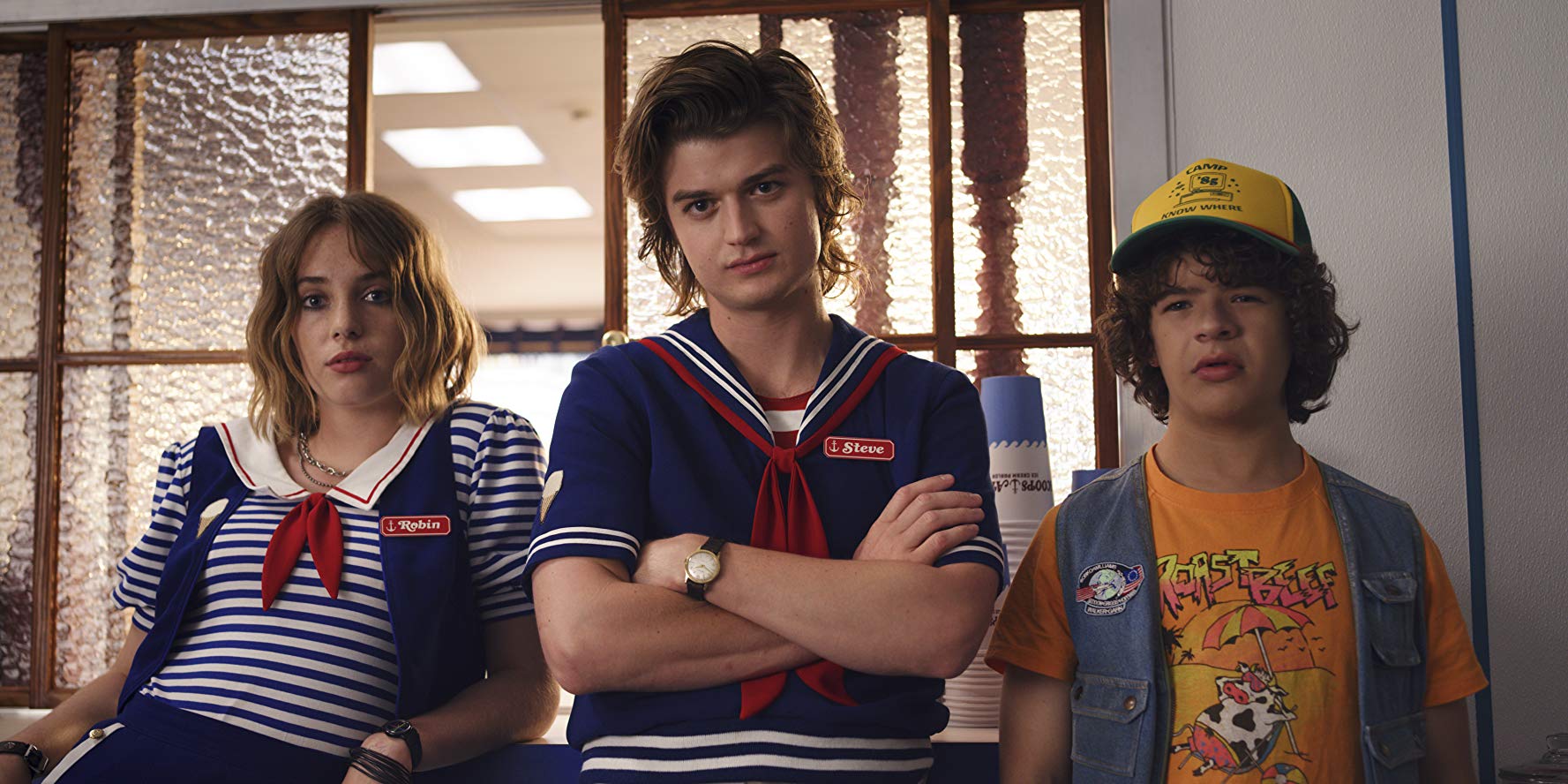
Keery and Hawke play this moment earnestly, from the way Steve slowly catches up to the fact that Robin likes girls to the way Robin twirls her hair nervous that her new friend won’t accept her. The two performers work together with an intimacy that feels so genuine. The fact that Steve doesn’t miss a beat and immediately works to restore her confidence by saying Tammy Thompson wasn’t that great of a singer, before launching them into a Muppet-like version of “Total Eclipse of the Heart,” makes for one of the most endearing acts of friendship in the series. It’s also great in general that the show has expanded its cast with a character in the LGBTQ community – Robin is a cool addition to the show, and I hope we get to see more of her in the future.
Even with many heartfelt moments this season The Duffer Brothers and the Stranger Things creative team have still found ways to include the series signature scares. Horrifying imagery such as the bodies of rats violently shaking and exploding into red goop or a single file line of mind controlled Hawkins citizens progressively disengaging into mush as they’re individually absorbed by The Mind Flayer make for impressive feats of design and direction. The fact that the show manages to pull off a large scale CGI creature for its heroes to face off against at the end of the season and not have it feel jarring is commendable especially after Game of Thrones.
Giving this digital creation a human anchor, by having The Mind Flayer use Max’s bully brother Billy as a primary vessel, goes a long way in creating emotional stakes for the season. Though the character performed many inexcusable actions during season two, this season successfully works to make audiences understand why Billy acts the way he does. When Eleven uses her mind powers to link with Billy, we see that the young man’s mindset is the product of physical and verbal abuse he experienced from his father; behind his constructed armor of a ruthless persona, he’s still a scared kid. Actor Dacre Montgomery does some fantastic character work this season as The Mind Flayer version of Billy, a role whose brute physicality is contradicted by eyes that almost always seem to be filled with tears. Montgomery uses this internal character struggle to show his character’s a helpless victim being influenced, which makes it incredibly sad when Billy chooses to sacrifice himself for Eleven by the season’s end.
Billy isn’t the only character to play the sacrifice card by the season finale; in a surprising turn of events, Hopper chooses to have Joyce destroy the Russian’s dimension-opening machine with him next to it. However, I’m not so sure this signals the end of our beloved police chief – the show almost purposefully never shows his body evaporate along with the rest of the nearby Russian scientists. Hopper also could have made it to the opening of The Upside Down created by the machine he was near.
Finally, there’s the possibility that Hopper is “The American” mentioned by the Russians who have shown to be still tampering with The Upside Down in the season’s post credits scene. Dead or alive, I’m positive the show will find a way for Harbour to come back, especially with the show’s heavy flashback element.
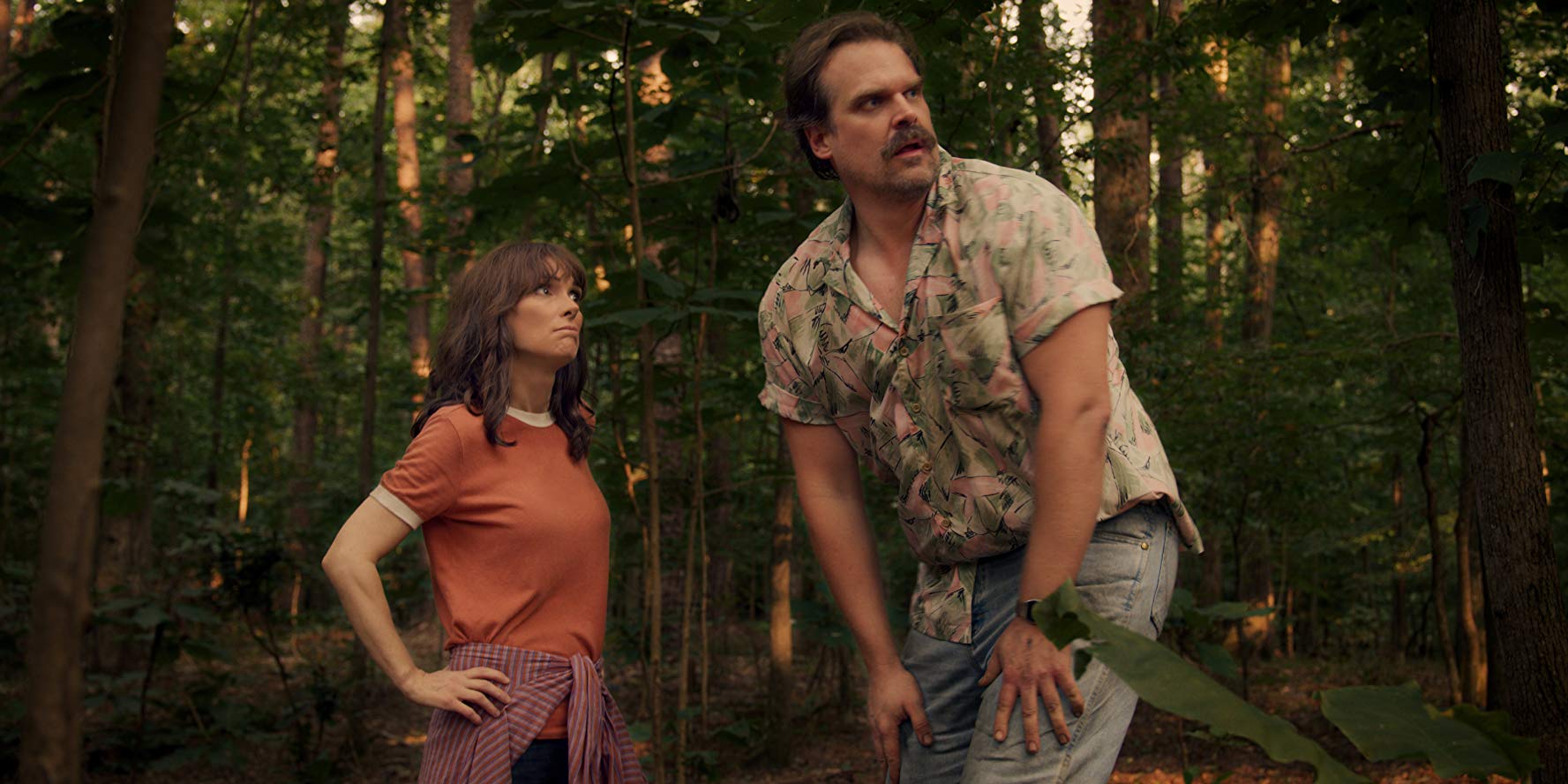
In terms of flaws, sometimes Stranger Things wears its ’80s beating heart a little too much on its sleeve. Throughout the season some of the ’80s soundtrack, though fitting nicely with each of the scenes they’re involved in, overpowers the original atmospheric score from Kyle Dixon and Michael Stein. Speaking of music, there’s a scene in the finale where Dustin connects through radio with his girlfriend Suzie where she makes them sing “Never Ending Story” by Limahl for a piece of information.
While this is really cute in the moment, it goes on a little long, and it breaks the tension as Dustin is trying to get information for his friends who at any moment could be killed by The Mind Flayer. The season also features an unstoppable Russian baddie who has to be inspired by Arnold Schwarzenegger. I found it a bit distracting after a while and kept waiting for him to pull out a book of Schwarzenegger character quotes such as, “I’ll be back.”
In terms of the overall story, I also feel that Jonathan, while being a nice addition to Nancy’s story, doesn’t feel as pivotal compared to seasons prior. I think if you removed him the plot could still function as-is.
These are just minor quibbles in a great third season of Stranger Things, where the tagline “One summer can change everything” rings true. The ending finds our protagonists in new and exciting places: The Byers move from Hawkins and a power drained Eleven goes with them, with Hopper nowhere in sight. With the core cast splitting up locationally, it’s hard to pin down exactly what’s in store for the future.
What’s for certain, though, is the large collective scrap book of a series will turn its page once again with fresh ’80s inspiration to draw from. Though it’s clear that these pages will be filled with references large and small, for Stranger Things’ characters, their pages will be blank, representing an exhilarating chance to stop looking back and to move forward.


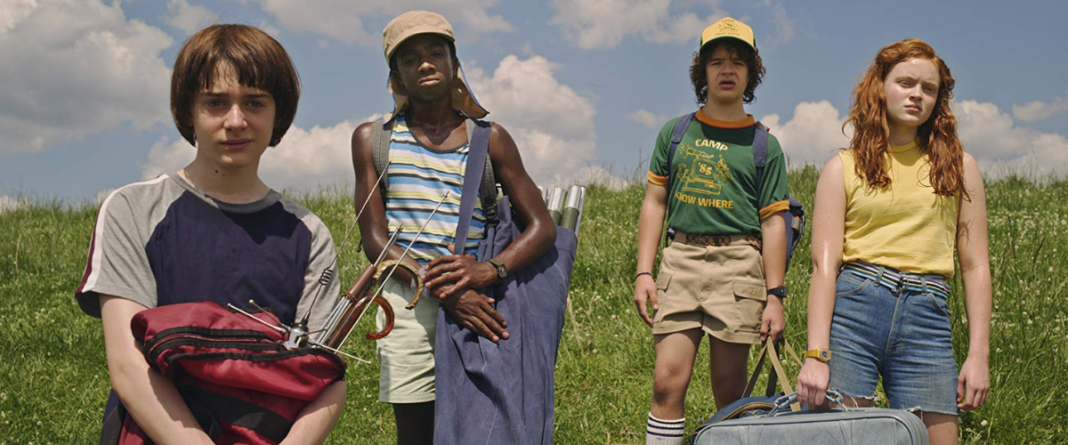
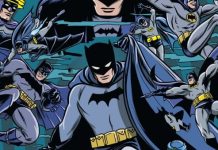
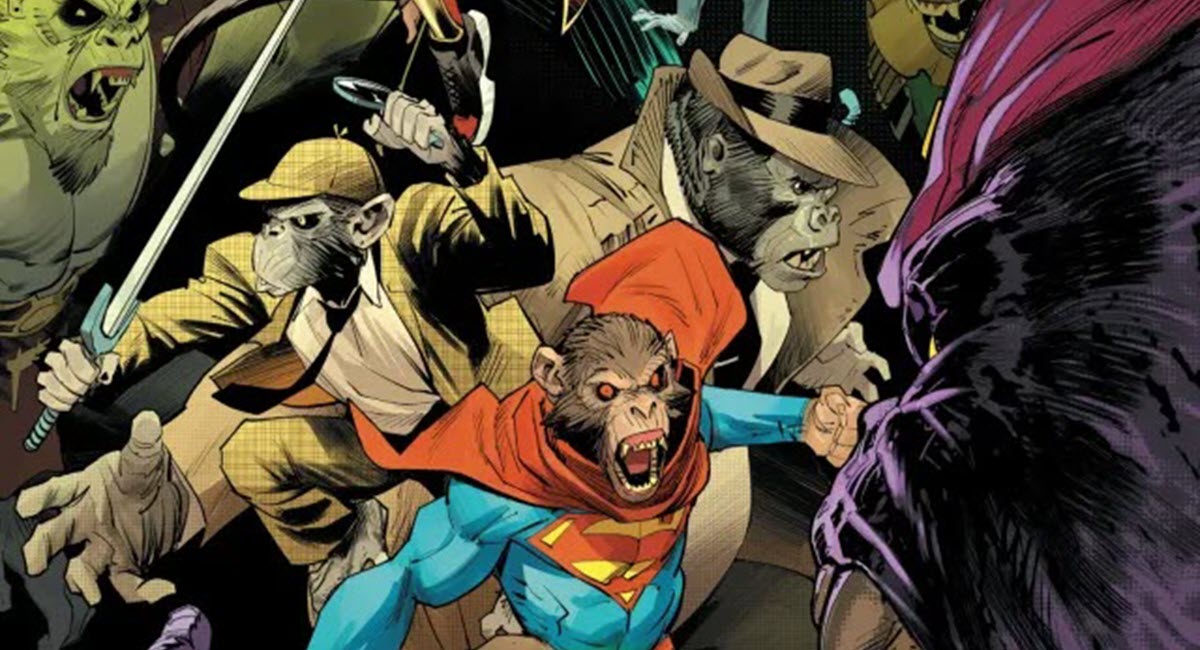
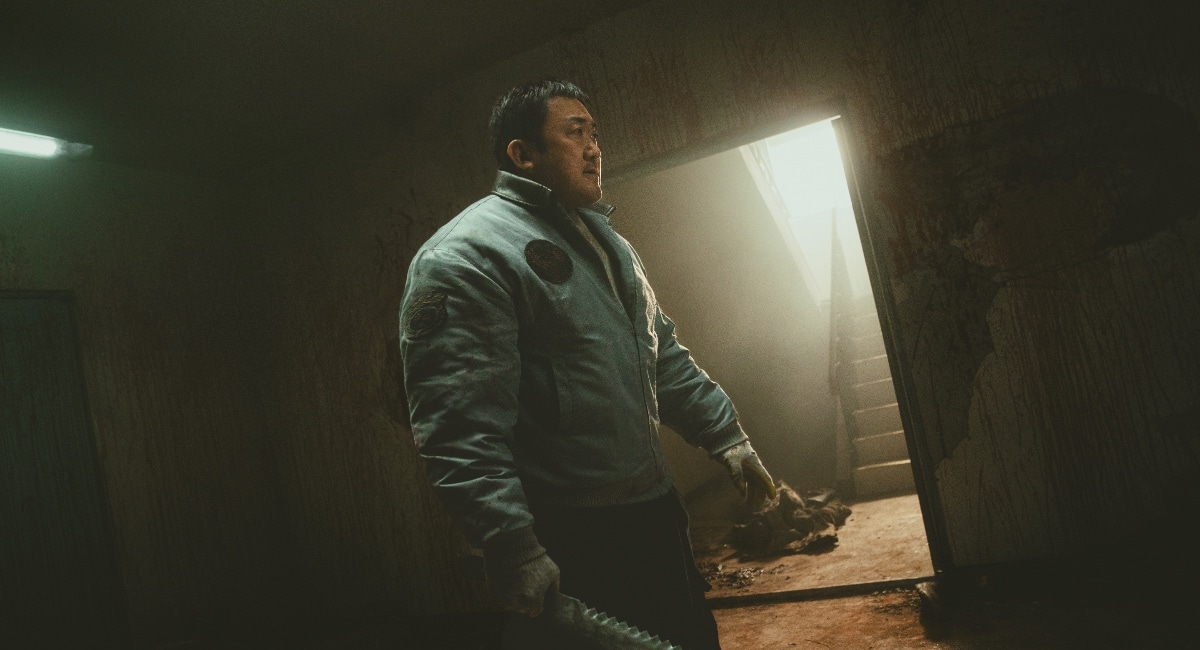


What would sites like this do without endless, constant hype for “Stranger Things”? A show whose fans (presumably born in the ’90s) refuse to believe owes anything to ’80s Spielberg, Stephen King, John Hughes, etc. Yes, it’s a total original. (Ha!)
Let’s not forget the fans who grew up in the 80s, for whom all the references are nostalgic gold, watching with their kids born in the 2000s!
Comments are closed.